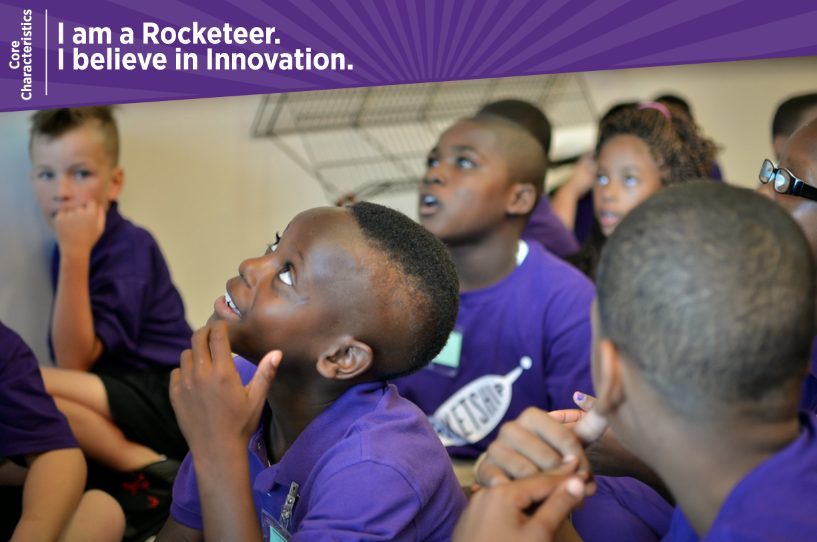
Our Students Deserve to Know the “Why”
by Maheen Sahoo, Third Grade Teacher
In my experience as a teacher, I have come to realize that there are two types of lesson plans. The first kind is the one you know you’ll hit home, deliver with grace and push your students to reach content mastery comfortably. Then there is the second kind of lesson. These lessons are ambitious and risky – you aim to teach concepts, not skills. They are the ones you spend hours perfecting and practicing. You walk into class knowing your delivery will be crucial in making your objective either a hit or a miss. In other words, your lesson will either blow your students away, or it will force you to take some steps back and regroup.
Before Common Core, most of my lessons fell under the first category. Memorize the multiplication algorithm? Check. Sing a song about the steps in a rounding problem? Check. My students certainly learned and grew tremendously under our old standards, but they were far less often innovators and risk-takers when they entered my classroom.
This year, everything changed. With Common Core came an end to my comfort with third grade math standards – and the beginning of my transformation as a teacher. My old lesson plans went out the window, and opportunity suddenly walked in through the door. It came in the form of a long division lesson, a classroom full of eager eight-year-olds and a multitude of color coding supplies.
It happened in September, just as my second year of teaching was beginning. My classroom was completely silent as my students contemplated the elaborate work on the board in front of them. On one side of was a visual representation of a division problem using place value discs and a hundreds chart, covered with various circles and arrows to represent renaming and equal groups. This was one of my initial attempts to teach the conceptual reasons behind the steps students use in algorithms – it was one of those second kinds of lessons. Adjacent to the visual representation was the traditional long division algorithm, with the four steps (divide, multiply, subtract and then bring down) color coded each time to match with my visual.
The Trojans, my home room class, and I had just walked through a division problem one step at a time in order to discuss what actually happened every time we did a step like “bring down” or “multiply” in our algorithm. This was in stark contrast to the previous year when I taught long division. Those lessons involved little to no conceptual backing, and instead relied on my students memorizing the four steps and repeating them every time they encountered a problem. Any third grade teacher can vouch for me when I say long division is one of the hardest things to teach – some students get it right away, some require more support. In the end it really just takes time, persistence and, as I came to find out, the right strategies.
I had not realized how powerful it was to add the “why” behind each step until one of my students raised her hand and made a comment that changed the way I looked at my lesson.
“Ms. Sahoo, I knew subtraction was a step in long division… but I didn’t know it meant anything until now!”
As I looked around the classroom, I saw her peers nodding and showing me their agreement through non-verbals. They understood the “why” behind each of the seemingly random steps in long division, and that made the process easy for them. When I came to this realization, I had two thoughts. The first was, “Why didn’t I get this kind of education when I was younger?” And the second was, “How can I make sure the rest of my lessons this year hit the conceptual understanding of math in this same way?”
I was inspired and motivated by my initial lessons on division to push myself to become an innovator in my classroom. Through rote memorization and multiple choice questions, my students will gain very little in this day and age. In collaborating, exploring and processing, they will change the world.
I was apprehensive at first, even a little scared. At the end of the day, however, I know that the work and time involved with teaching deeper concepts is worth it. There is always a choice between the first kind of lesson and the second kind of lesson. I am a Rocketeer because our students deserve to know the “why” behind the world they live in. When students are given the chance to truly grapple with the world around them, they are bound to succeed – so I choose the second option, always.
Maheen Sahoo is a founding 3rd grade math teacher at Rocketship Spark Academy. She attended the University of Southern California, where she studied Philosophy, Politics and Law with a minor in Communication Law and Media Policy. In her daily life, she enjoys using her students as an audience for her puns and teaching them about important USC traditions. She also squeezes in some math from time to time. Fight on!
Published on January 13, 2015
Read more stories about: Education Reform.


